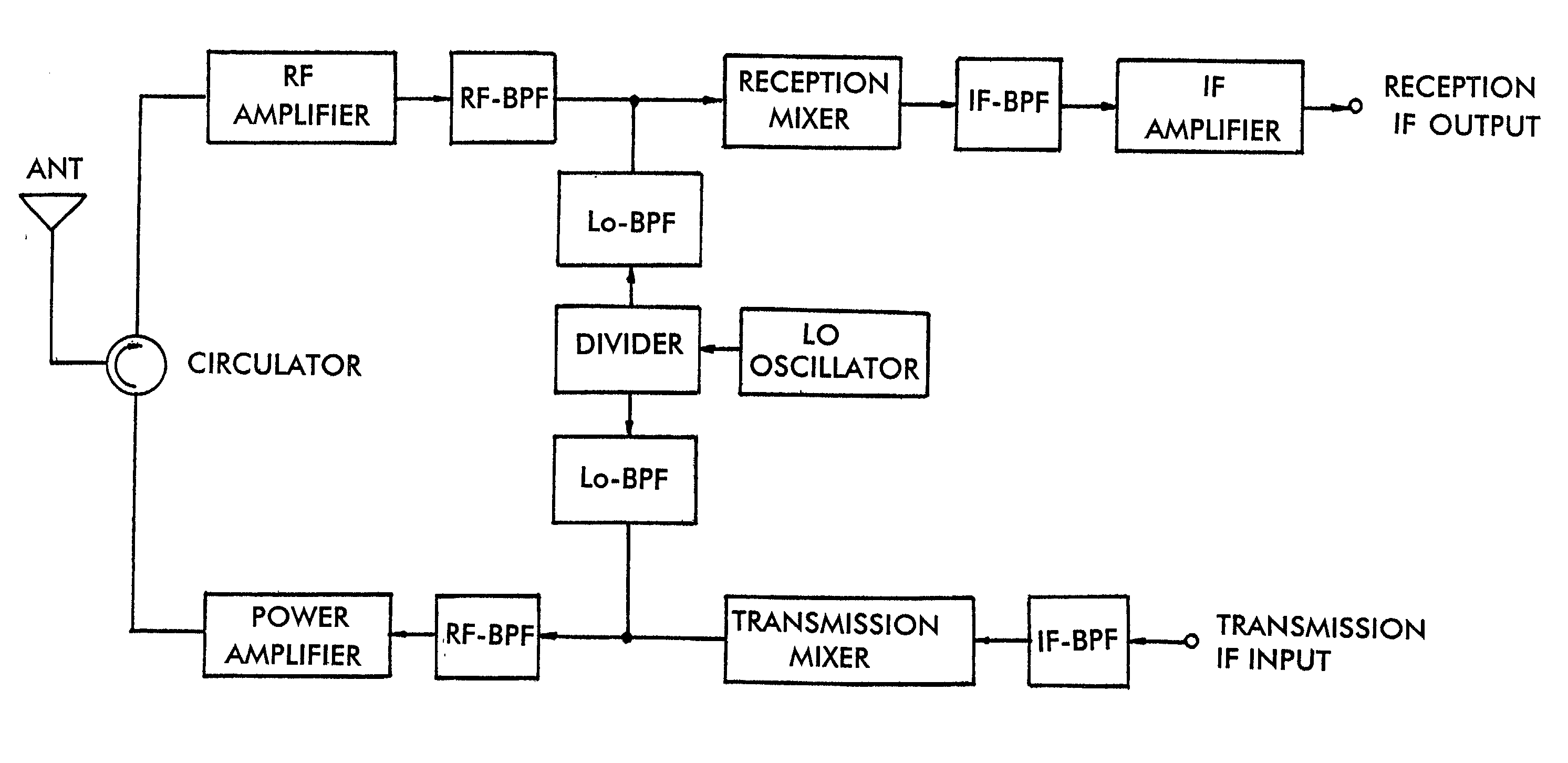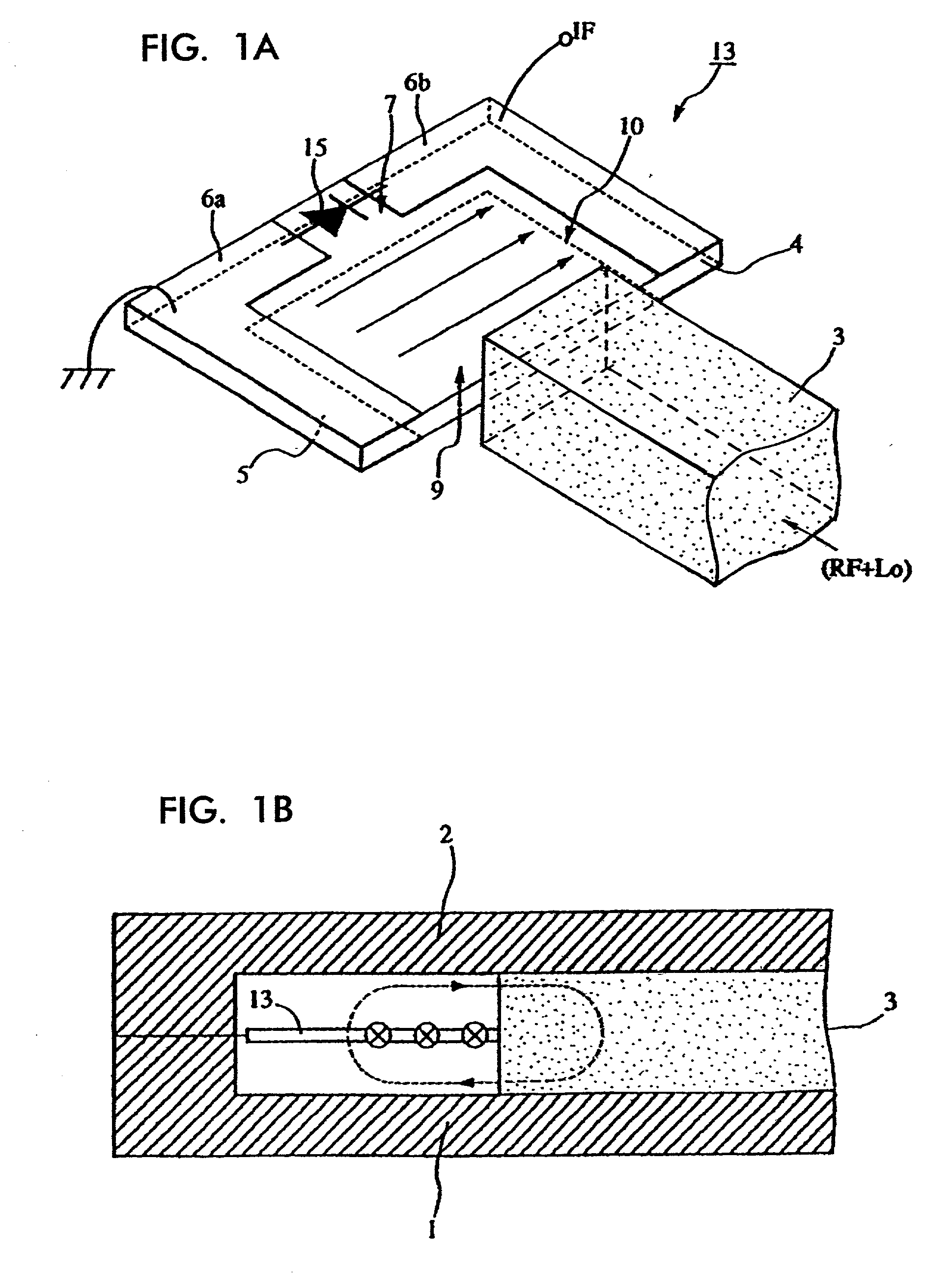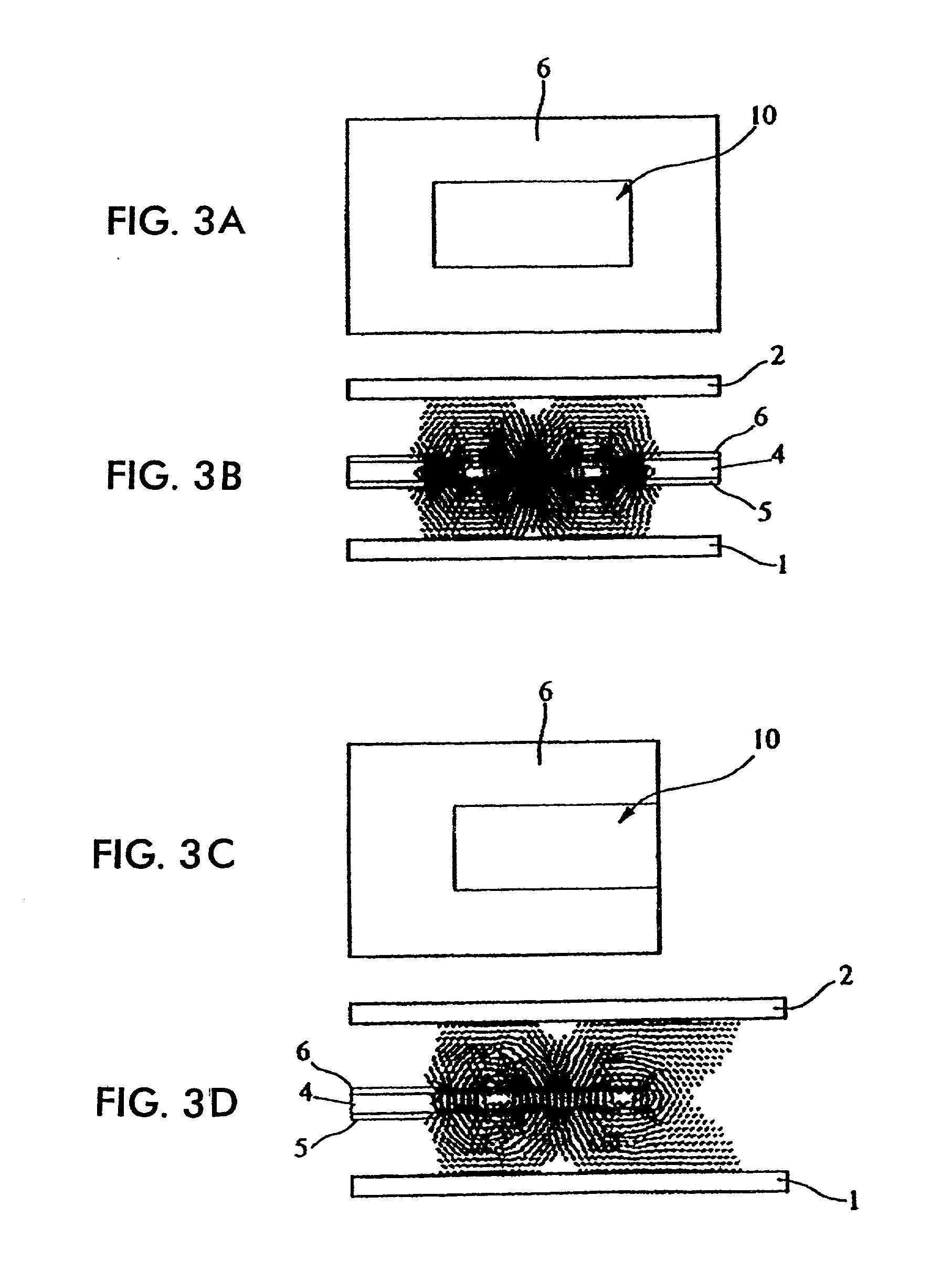Mixer, radar module, and communication apparatus incorporating the same
a radar module and mixer technology, applied in the direction of instruments, waveguides, computations using denominational number representations, etc., can solve the problems of high frequency energy leakage from the filter circuit, signal does not necessarily produce resonance, and loss of entire losses
- Summary
- Abstract
- Description
- Claims
- Application Information
AI Technical Summary
Benefits of technology
Problems solved by technology
Method used
Image
Examples
first embodiment
[0028] FIGS. 1A and 1B show the structure of a mixer according the present invention.
[0029] FIG. 1A is a perspective view of the main part of the mixer when upper and lower conductive plates are removed. FIG. 1B is a section of the main part thereof. In these figures, reference numeral 4 denotes a rectangular planar dielectric substrate. An electrode 5 is formed on the lower surface of the substrate 4 and electrodes 6a and 6b are formed on the upper surface thereof. The electrode 5 and the electrodes 6a and 6b are arranged such that electrode apertures 9 and 10 are opposed to each other via the dielectric substrate 4. The part of the dielectric substrate sandwiched between the mutually opposing electrode apertures 9 and 10 serves as a rectangular planar TE-mode dielectric resonator.
[0030] In addition, a slit 7 continuous with the electrode aperture 10 is formed on the upper surface of the dielectric substrate 4. A mixer diode 15 such as a Schottky barrier diode is connected in a man...
third embodiment
[0054] Referring to FIG. 7, a description will be given of a mixer according to the invention.
[0055] FIG. 7 also shows a part corresponding to the part shown in FIG. 1A in the first embodiment. Each of the first and second embodiments uses the rectangular planar TE-mode dielectric resonator in which one end of each electrode is open-circuited and the open-circuited electrode portions of the dielectric resonator are positioned near the end of the dielectric strip 3. However, the embodiment shown in FIG. 7 uses the rectangular planar TE-mode dielectric resonator in which both ends of the electrodes are short-circuited, as shown in FIGS. 3A and 3B. With the use of the resonator having the electrodes with both ends short-circuited, as compared with the resonator having the electrodes with one end open-circuited, a mixer having a higher unloaded Q and lower loss can be formed. However, since the strength of coupling between the dielectric resonator and the dielectric line reduces, the mi...
fourth embodiment
[0059] Referring to FIG. 8, a description will be given of a mixer according to the invention.
[0060] Although each of the first to third embodiments uses the dielectric line as a signal-input line, the mixer shown in FIG. 8 uses a waveguide as a signal-input line. Specifically, in FIG. 8, reference numeral 14 denotes a rectangular waveguide. The circuit board 13 shown in one of FIGS. 1, 6, and 7 is arranged inside the rectangular waveguide. In this arrangement, the electromagnetic field of a TE10 mode wave propagating through the waveguide couples with the electromagnetic field of a rectangular planar TE-mode dielectric resonator formed on the circuit board 13. The mixer of the fourth embodiment is easily suitable to an apparatus using a waveguide as a transmission line.
PUM
 Login to View More
Login to View More Abstract
Description
Claims
Application Information
 Login to View More
Login to View More - R&D
- Intellectual Property
- Life Sciences
- Materials
- Tech Scout
- Unparalleled Data Quality
- Higher Quality Content
- 60% Fewer Hallucinations
Browse by: Latest US Patents, China's latest patents, Technical Efficacy Thesaurus, Application Domain, Technology Topic, Popular Technical Reports.
© 2025 PatSnap. All rights reserved.Legal|Privacy policy|Modern Slavery Act Transparency Statement|Sitemap|About US| Contact US: help@patsnap.com



